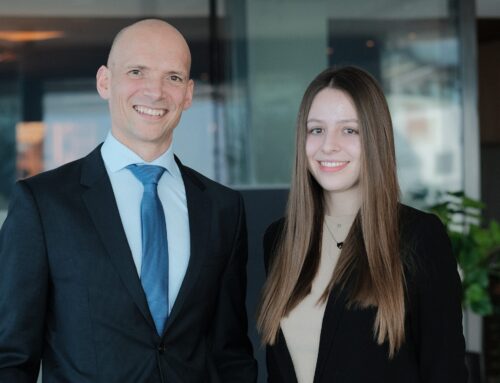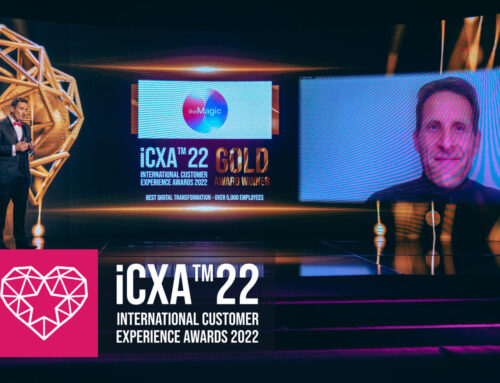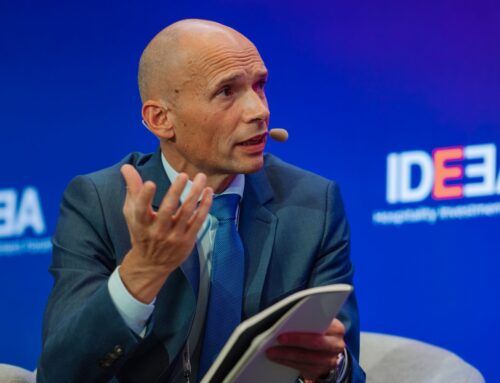by HA Perspective 2016, Issue 7: 22 February 2016
Marriott International saw revpar growth tick down during the fourth quarter as group business fell, but remained confident of a strong 2016.
The results came as the company, which said that it was looking to its select service brands for its overseas push, signed a development agreement to bring the Fairfield by Marriott brand to mainland China.
Commenting on the China deal, president & CEO Arne Sorenson said: “Demand for economy-tier lodging has grown rapidly in China in a relatively short period of time, as the middle class has rapidly expanded.
“We want to make sure that we are playing in all of the segments which are relevant to the growing China middle class and not purely being in the luxury space which is really where we’ve been so far.” Eastern Crown is targeting 140 signed deals over five years, including 100 Fairfield hotels expected to open by 2021.
The company’s total global pipeline was 270,000 rooms, with the system growing by nearly 52,000 rooms in 2015, 11,000 in the fourth quarter, taking the system to nearly 760,000 rooms worldwide. According to STR, at year-end 2015, 27% of hotels under construction in North America were affiliated with one of Marriott brands, more, Sorenson said, than any other hotel company.
Outside North America, the group is looking to its limited service portfolio, which has more than tripled in the past five years, to 316 hotels, with another 250 hotels in the development pipeline.
Looking ahead Sorenson commented that weakness in the financial markets in North America was making debt financing more difficult and “as a consequence, I suspect that some of these deals which have recently been signed will be harder to get financed than deals that were signed maybe a year ago”, with some being delayed or possibly killed.
Within North America, limited service hotels drove incentive fee growth. For the full year, the percentage of hotels in the region paying incentive fees increased from 36% to 63%. The increase in the number of hotels paying fees was largely due to three portfolios of limited service hotels that earned USD7m in incentive fees in the full year 2015 and, the group said, were expected to earn higher incentive fees amounts in 2016. The same was not true in the international market, where the company was hit by foreign exchange headwinds.
The growth did not include Starwood Hotels & Resorts. Sorenson said he expected it would mean a “significant leap forward” when the transaction completes. Shareholders are due to meet to discuss the deal on 28 March, with completion likely in the middle of the year.
Sorenson said: “The combination of Starwood’s leading lifestyle brands with Marriott’s strong presence across the select service and luxury tiers as well as our convention and resort segment will create a very attractive portfolio that should be more appealing to guests and meeting planners, and thus more appealing to owners and franchisees as well.”
Discussing the response of owners to the deal, Sorenson said: “The owners and franchisees love it. Obviously, each of them will ultimately look at it from a very selfish perspective – what about my hotel in this market and what is the impact there? – they’re still … trying to understand that piece of it.”
While the Marriott International executives would not be drawn on the specifics of the integration, CFO Leeny Oberg reaffirmed that, “when integration occurs that we’re looking at USD1.5bn to USD2bn-worth of cash coming from the asset sales”.
Worldwide system-wide comparable revpar for the full year rose 5% on a constant dollar basis for the full year with average daily rate up 4%. In North America, revpar also grew 5% for system-wide comparable properties and occupancy reached 74%. Sorenson said that, in the fourth quarter system-wide North America revpar grew 5% in October, “roughly 4% in November and just under 3% in December”, pulled down by “weaker than anticipated” rates, as demand in the oil-producing regions fell and group business slackened over the festive period.
He added that, for the full year 2016, group revenue booking pace was up 7%.
Looking ahead, the company expects worldwide gross rooms growth of 8%, or 7% net, adjusted Ebitda growth of 10% to 14% (against 13% for 2015) with worldwide systemwide comparable revpar increasing 3% to 5% on a constant dollar basis, driven by occupancy, down on the previous forecast of 4% to 6%.
In a note to investors, Canaccord Genuity’s Ryan Meliker said: “We believe investors will focus on the outlook here, which has been cut on the revpar line to a more achievable level. In fact, the 3% to 5% revpar guidance seems conservative, when considering that corporate negotiated rates up mid-single-digits and group revenue pace is up 7% on a strong 10% increase in group bookings in 4Q”.
Eyes are now on Marriott International and Starwood Hotels & Resorts as the deal faces the final hurdles. Speculation is rife as to which brands will remain in the stable, speculation which Sorenson was clear to analysts that he would be unable to answer before the two companies were combined. He spoke for everyone in the room when he said: “Like you, we eagerly await this afternoon’s comments from Starwood about their business trends.”
HA Perspective [by Chris Bown]: The growth graph is clearly tailing off, and had Sorenson heard Starwood’s numbers, he might have had a tougher time from analysts, and been more inclined to trim his outlook further. Starwood disappointed, and the Marriott team will surely be wanting to get their hands on the portfolio sooner rather than later, to help improve matters.
As Ian Rennardson from Jeffries warned during his presentation at the recent Hotel Alternatives conference, the going is about to get a lot tougher for the major US hotel groups. And for many investors, that has already been reflected in dampened hotel sector share pricing. Supply in key US city markets is rising, just as the shine goes off the US economy. The result is slowing revpar growth – but just how much, and will the graph flatten or tip down later this year?
One notable element from the recent round of results is that the lower rungs of the US hotel market look to be faring better. Choice reported strong performance, while at Hyatt it was the group’s select service properties that delivered the highest revpar growth. Sorenson has spotted the trend, but Marriott will need to work hard to increase its international presence in these segments of the market; however, with Moxy and AC, it is gathering momentum. Is luxury suffering due to the economic situation, or perhaps seeing the impact from sharing economy alternatives?
Internationally, Marriott now admits that its Chinese operation needs more presence in the middle ground, hence the decision to team up with Eastern Crown. Fairfield, a purely US economy brand that is about to celebrate its thirtieth birthday, will probably need refreshing for the Chinese market.
Additional comment [by Andrew Sangster]: Marriott’s revpar outlook may have been clipped by one percentage point but the turbulence in the market which led to this downgrading means the Starwood deal looks much less likely to attract a counter bid.
When challenged about the attitude of owners towards the deal Sorenson said: “They love it. They absolutely love it.” This is not quite the reaction among owners that Hotel Analyst has spoken to, many with concerns about areas of protection in particular.
Where owners do agree is that the deal is being driven by the need to gain better leverage on distribution costs. But that can also have a downside. Cutting costs is no good if that is done at the expense of market share.
According to Priceline, the new hard line approach from the biggest hotel chains, and Marriott and Hilton have been the hardest, has led to a decrease in the volume of business being delivered by Booking.com to the chains.
In fact, Priceline CEO Darren Huston during his results conference call claimed these big chains were only getting half the guests that could be delivered by the OTA thanks to the recent slew of restrictions. In particular, the ending of last room night availability is thought to be cutting traffic.
This, of course, does not matter if guests end up booking direct with the hotel chain instead. What is not known is how many guests that would have booked with Marriott or Hilton are now booking with competitors.
Where owners and Marriott are in accord is around the enhanced loyalty programme which is expected to drive business even more strongly than at present. Marriott was at pains to point out (again) that Starwood’s loyalty scheme members are not going to lose out in the merger.
Marriott was also emphatic that it is going to remain an asset light business and all of Starwood’s properties would be sold. Last year Marriott made close to USD950m worth of asset sales (a number that includes some note collections and investment redemption) as it used its balance sheet to enhance its brands but then recycle the capital as quickly as possible.
In 2016, Marriott is promising to return USD2bn to shareholders just from its existing business and is promising “meaningfully” more as a result of acquiring Starwood.
The fee revenue model is the one that Marriott believes attracts its shareholders. And it is keen on making it a low volatility fee business. It said that incentive fees now account for only 17% of the overall pot compared to 26% back in 2007. And this is not because fewer hotels are paying incentive fees (the share of North American hotels paying incentive fees increased from 36% at the start to 63% by the end of 2015, as noted above).
A key change of the combined Starwood Marriott entity will be increased internationalisation. Right now, just 8% of worldwide fee revenue comes from Asia Pacific and just 7% comes from Europe. Given the expectation for Europe to see a low single digit increase in revpar this year, the share of fee revenue for this continent in Marriott’s legacy business is only likely to decrease.








Leave A Comment